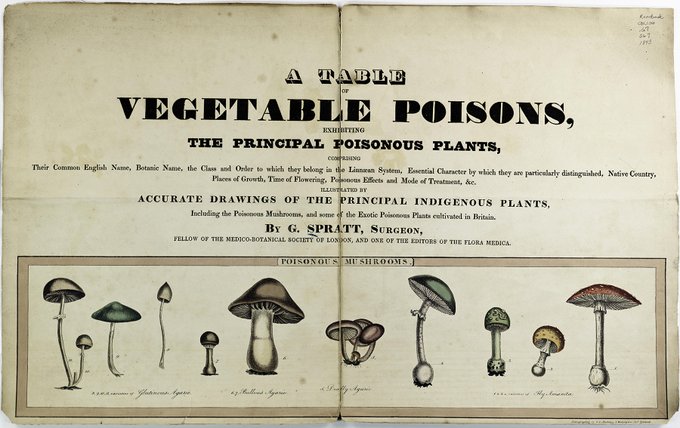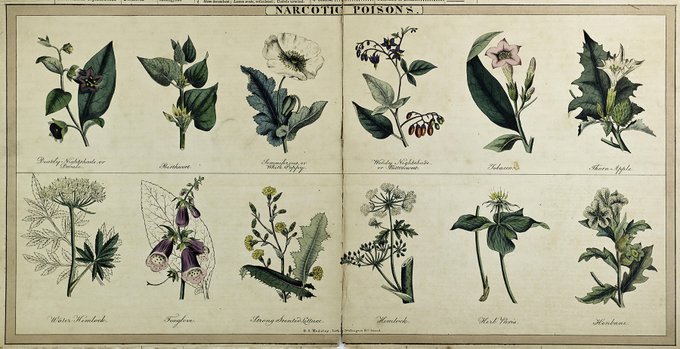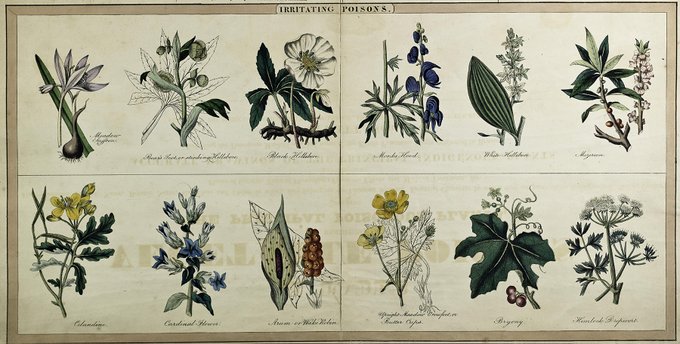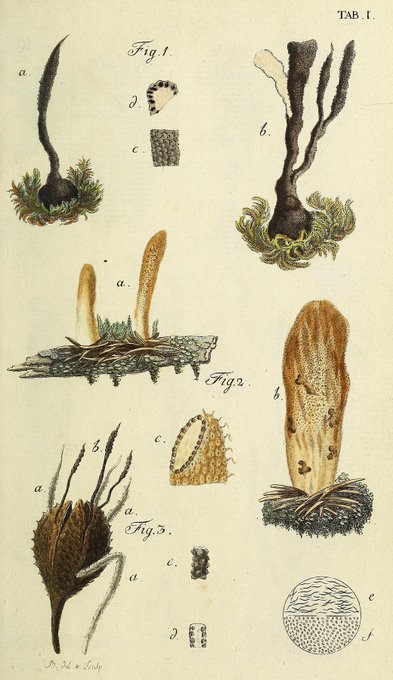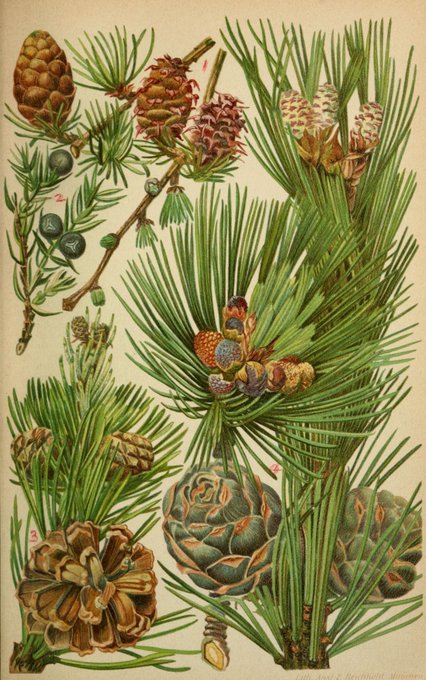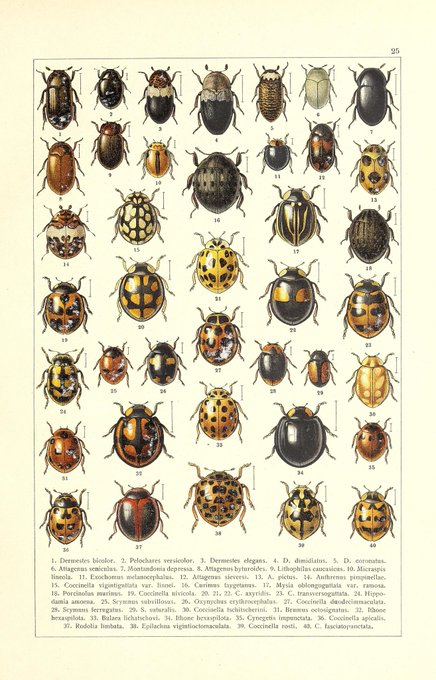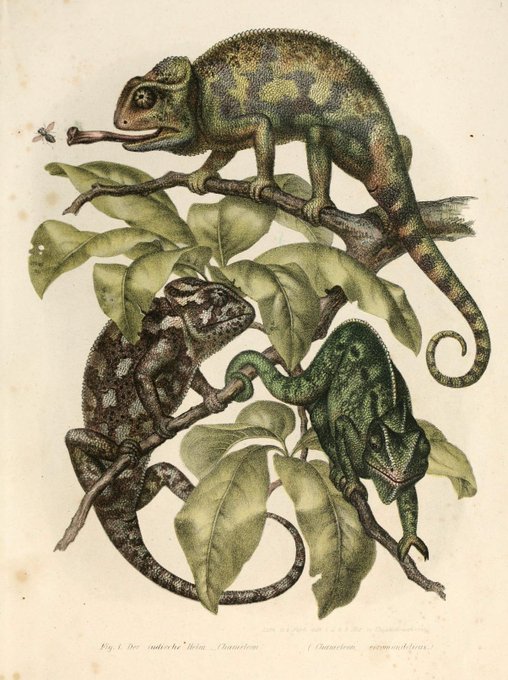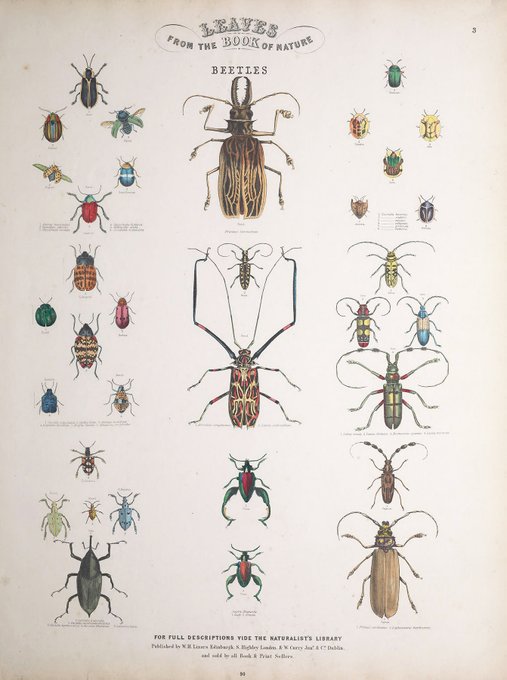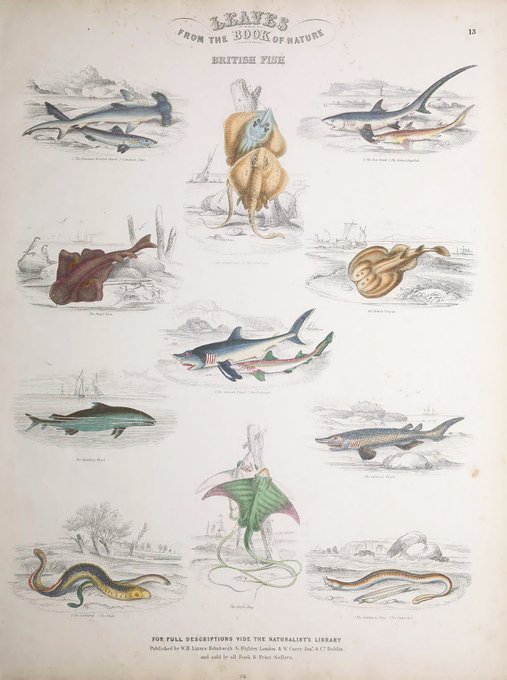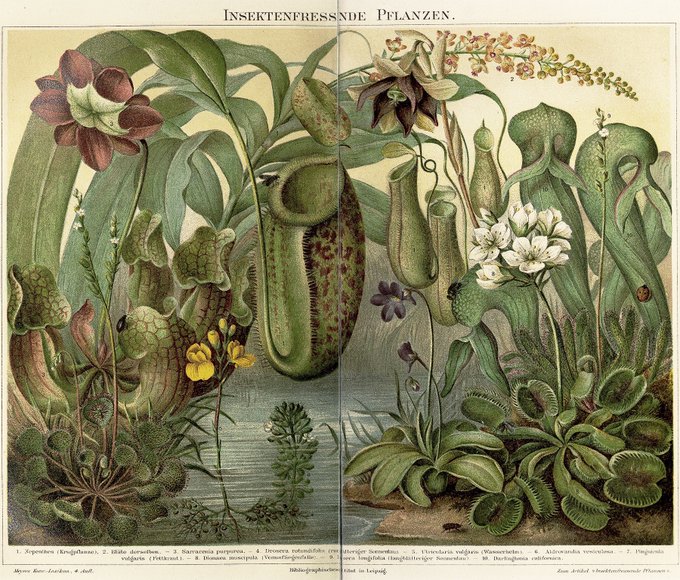BHLibのTwitterイラスト検索結果。 357 件中 2ページ目
It's a poisonous #FloraFriday + #FungiFriday! ☠️ 🍄🌼
"A table of vegetable poisons" (1843) describes the characteristics, locales, and effects of poisonous plants & mushrooms found throughout the world. Find it in #BHLib via @mobotgarden ➡️ https://t.co/hkeH2EO3qb
Damson #Plums (Prunus domestica insititia). This fruit is known for its distinctive rich flavor. #SciArt from Jakob Sturm's "Flora von Deutschland", Bd. 8 (1904) by Ernst H.L. Krause.. Contributed for in #BHLib by the @Kew_LAA of @kewgardens ➡️ https://t.co/NmOojfYg56
Happy #MycologyMonday! Christiaan Hendrik Persoon (1761-1836) has been called the "father of systematic mycology." One of his early works, "Observationes Mycologicæ" (1796-99), is available in #BHLib via @NHM_Library — it includes a letter from Persoon! https://t.co/GVvvwVwu1p
"Alpenflora" (1905), by Gustav Hegi & Gustav Dunzinger, offers a comprehensive account of the botany of the mountainous Alpine regions, particularly Bavaria, Austria and Switzerland. Explore the work in #BHLib thanks to @NYBG ➡️ https://t.co/OTcZbywBeV
#BotanicMonday
🐟 Matabele land and the Victoria Falls: .
London: C.K. Paul, 1881.
39 sp. of fish live in the Zambezi below Victoria Falls & 89 live above it. Here's a gorgeous pic of the falls n #bhlib https://t.co/AWUvxRyHDM
"Zhuki Rossii i zapadnoĭ Evropy" (1905-1915) was authored by Russian entomologist & beetle specialist Georgii Georgievich Iakobson (1871-1926). His catalog of Russian beetles was issued in 13 parts between 1905-1915. Find it in #BHLib via @NHM_Library ➡️ https://t.co/wLZSbafZnI
🐸 Bilder-Atlas zur wissenschaftlich-populären Naturgeschichte der Wirbelthiere
Wien: K.K. Hof-und Staatsdruckerei, 1867.
4 Tiny new sp. of #chameleons might be smallest reptiles! Love this image of chameleons in #bhlib https://t.co/jz91G08yJB
We're joining our museum colleagues to bring you some #MuseumSunshine through a virtual garden of yellow flowers. 🌼🌻🌼
See these and more sunny blooms in the #BHLib Flickr ➡️ https://t.co/bYa2rZJrTp
Explore the animal world — at home! 🐛 🦆 🐅 🦈
"Leaves from the Book of Nature" (c1840), which reproduces the #SciArt from Sir William Jardine's "The Naturalist's Library", offers an illustrated wonderland of fauna. In #BHLib via @SILibraries ➡️ https://t.co/fzMdB87lrL
#MycologyMonday: "Histoire des champignons comestibles et vénéneux" details the characteristics of a variety of edible and poisonous mushrooms. 🍄
Find the 2nd ed. (1841) in #BHLib via @uofglibrary @internetarchive ➡️ https://t.co/dKJ6djHIod
#BotanicMonday: a cultivar of Sturt's Desert Pea (Swainsona formosa), one of Australia's most recognizable #wildflowers. #SciArt by P. Stroobant for "L'Illustration Horticole", Vol. 12 (1865), contributed in #BHLib by the Raven Library of @mobotgarden ➡️ https://t.co/qbuvycC92J
March 29: Red currant is in bud, according to Stillingfleet's 1755 #CalendarOfFlora, recorded in Norfolk. Ribes rubrum. Choix des plus belles fleurs: et des plus beaux fruits by Redouté. https://t.co/TpJel3hBRZ via @BioDivLibrary @mobotgarden. #BHLib #SciArtSunday #SolaceInNature
🌱 Lehrbuch der Botanik;.
LeipzigQuelle & Meyer1911.
The European White #Waterlily grows in water 1-5 ft deep. See a beautiful illustration of it in #bhlib https://t.co/Uw6RcYvrDE
Elinor Frances Vallentin collected hundreds of plant specimens from the Falkland Islands. She illustrated many of these in her 1921 work on Falkland Islands botany, which is freely available online in #BHLib via @FieldMuseum ➡️ https://t.co/N1E0DPjDtj
#HerNaturalHistory
George Ernest Shelley's "The Birds of Africa" (1896-1912) reviews more than 2,500 birds. The 57 hand-colored lithographic plates are after #SciArt by Henrik Grönvold. All 5 volumes are freely available online in #BHLib via @SILibraries ➡️ https://t.co/3TwX7vpDOp
#Feathursday
Carnivorous plants obtain nutrients from animals or protozoans, which they trap and digest. #SciArt of "insektenfressnde pflanzen" ("insectivorous plants") from "Meyers Konversations-Lexikon", v. 8 (1890, 4th ed.). In #BHLib from @uoftlibraries ➡️ https://t.co/KzkHjy2TbD
We're captivated by the wildlife scenes in "African scenery and animals" (1804-05), featuring hand-colored aquatints after art by Samuel Daniell. So, we're sharing these scenes for #WorldWildlifeDay. Find them in #BHLib via @SILibraries ➡️ https://t.co/OF9RSk2Tks
Happy #MycologyMonday! The European blusher (Amanita rubescens) is so named because its flesh turns pink when bruised or cut. #SicArt by Anna Maria Hussey for "Illustrations of British Mycology", Ser. 1 (1847), in #BHLib via @NYBG ➡️ https://t.co/GuySl9vQOD
#HerNaturalHistory
"Butterflies of Australia" (1914) is illustrated by 43 plates—with a total of 888 illustrations—made from original drawings and photographs. @hayleybwebster shares more about @museumsvictoria's author-annotated copy now available in #BHLib ➡️ https://t.co/IapbZrpvfH 🦋
The Classic poets sometimes referred to dawn as 'crocea'; a reference to the pale purple hue of early morning. [George Clausen via @WikiCommons / Edwards's botanical register via @BioDivLibrary @mobotgarden] #FolkloreThursday #BHLib

